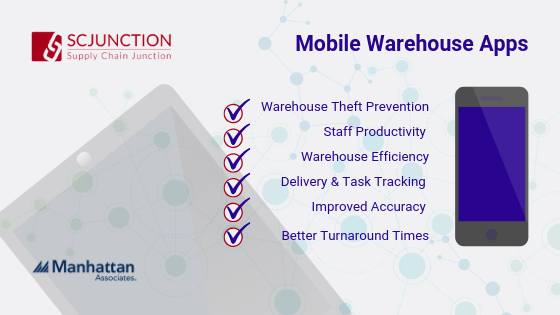8 Ways to Reduce Warehouse Costs & Increase Profits
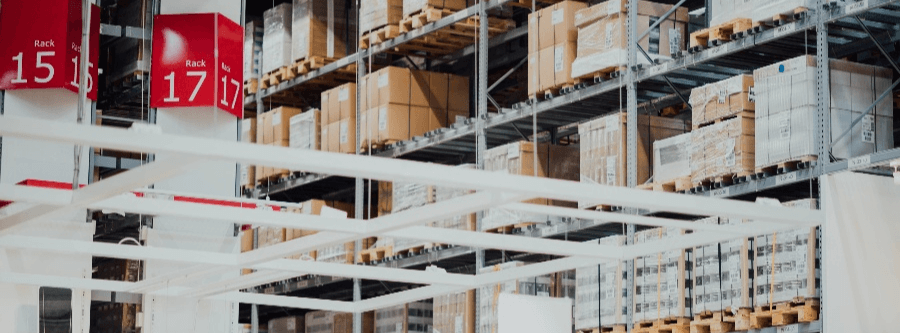
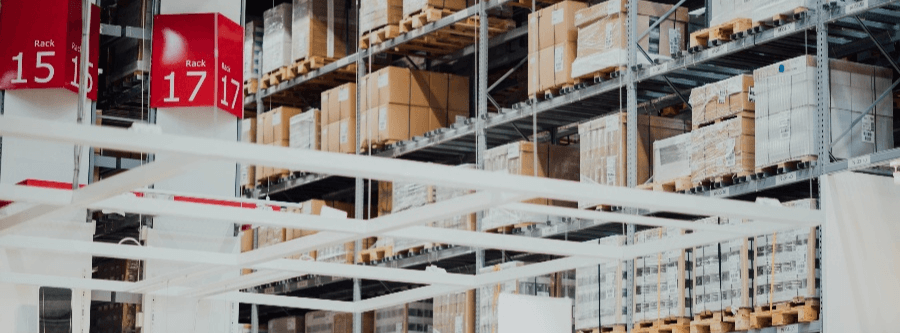
To secure any measurable success in the current economic climate of minimal stability and maximum competition, it’s imperative that warehouse productivity is increased and your operational costs are decreased. We tell you how.
Maximising profits is essential for survival. It requires not only a carefully planned strategy with deliberate execution, but casting a wider net to ensure best practices are enforced to cut dead weight and streamline processes.
The management of your warehouse is the pulse of your supply chain: it assists with the optimisation of processes, customer bliss, and thus ensures overall inventory profitability. It is easy to forget that inventory equals cash, so it’s essential that costs are minimised through proper management, whilst providing every party at every step with a detailed overview of supply chain operations.
To help in these unprecedented times as many companies embrace a digital revolution to ensure their business thrives (and not just survives), Supply Chain Junction has created 8 Essential Exercises to put your warehouse on track to spending less and making more.

1. Inventory Visibility
Inventory visibility across your entire supply chain provides obvious and essential benefits, especially as we welcome a new wave of online shoppers, different retail trends, and global shifts in spending.
Unfortunately this is often overlooked by business owners, busy with responsibilities in other areas. It can prove exceptionally frustrating relying on an employees memory in locating product, especially impossible when companies are enforcing social distancing and employees are absent.
It is evident and understandable that in 2020 consumer expectations - and emotions - are at an all-time high, advancing on a daily basis with IoT-enabled devices promoting a seamless and speedy experience.
Frankly, businesses that can't meet these requirements will rapidly lose out to those that rise to the challenge. It is obvious that meeting consumer demands begins with your ability to have inventory visibility at any given time, and essential to devote resources to this.
A recent study revealed that two-thirds of companies consider their fulfillment process efficiency to be below average. With no sense of the inventory on hand, it becomes far too easy to order too little stock (and have people fighting over sanitiser) or too much stock (and not be able to move it while your cash investment sits dormant on shelves). Not only will this create fulfilment issues but, depending on the nature of your business, can also lead to losses due to expiration.
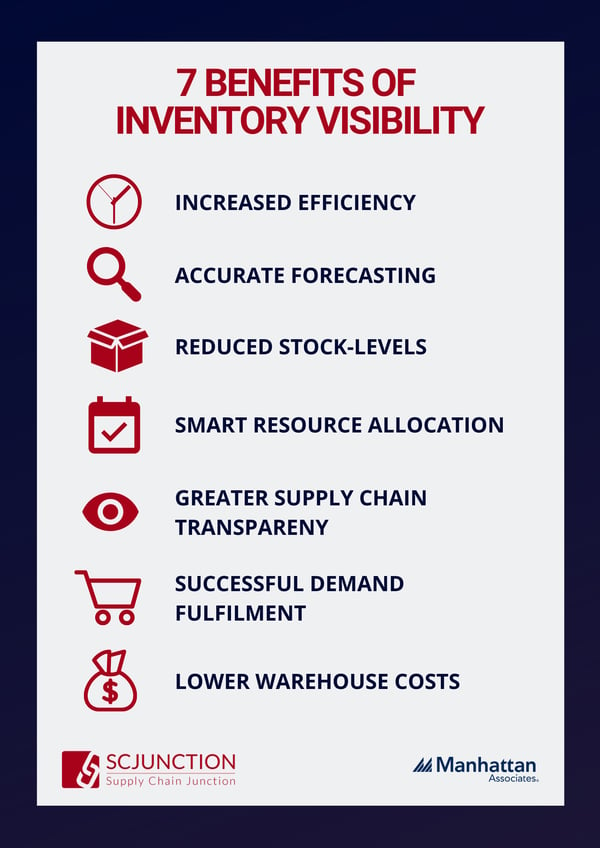
With every business unique in nature, ensuring visibility of your inventory across your entire supply chain at any time requires a careful assessment of challenges, demand cycles and distribution channels.
Following this, the sourcing of a solution to improve your company’s inventory visibility will be far easier and most likely include a combination of technologies, such as RFID, barcode scanners, and other automation technologies.
2. Storage Optimisation
Ensuring optimisation of your storage capability appears obvious on the surface but in reality, this is far more complex and an often overlooked area. Especially with disruptions in global supply chains, stockpiling is an essential consideration, what the what and where pose serious challenges to flexibility, affordability, and access.
It is integral to save time, space, and resources whilst simultaneously reduce errors and improving flexibility, communication and management - successfully optimised warehouses are vital for an agile supply chain, and beat competitors on every level, consistently.
Warehouse storage optimisation considerations include:
- physical structure
- warehouse flow
- product placement
- storage
- retrieval methods
The latter are all important considerations to ensure a cost-effective storage optimisation plan, streamlining your warehouse inventory management to achieve increased efficiencies which is turn result in reduced costs.
To successfully optimise your warehouse storage for maximum efficiency it’s vital to partner with professionals who employ world-class layout and design principles.
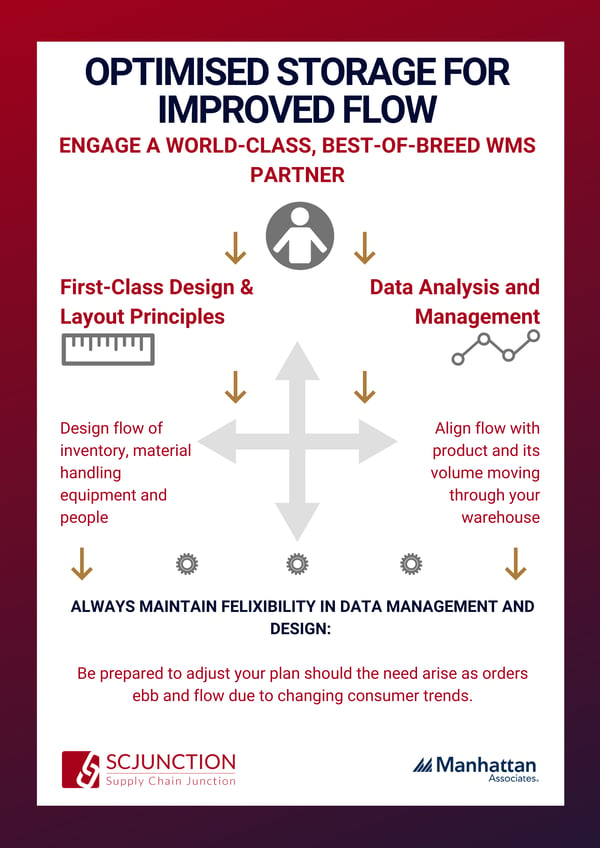
It stands to reason that a fully optimised warehouse will improve traffic flow, reduce loss of stock, and boost productivity, all resulting in overall improved efficiency. This is great news for any business, as it results in driving profit and delighting customers, every time.
Interested in more on warehouse storage optimisation? - Read our in-depth article here.
3. Theft Identification & Prevention
Theft is a growing and widespread issue leading to inventory shrinkage, and one likely to escalate in the global stress of Covid. Theft is always a challenge to prevent, as the magnitude of goods moving through your system is tempting for staff at any handling point - it can be tricky to identify whether missing stock is due to theft, or simply misplaced inventory, and where it might have occurred, making it hard to identify culprits and stop it.
The red flags signalling warehouse theft include:
- stock levels which don’t match your sales records
- staff rumours about theft
- dips in sales when specific staff members are on duty
- missing or unusual invoices
- stock being constantly discovered in the wrong place (e.g. close to exit or loading bays)
The reasons for theft vary greatly, from employees battling with their personal financial situations, a sense of entitlement, frustration in the workplace, to pure opportunity. In an economic crisis such as the Coronavirus, even if your employees are well provided for they may find themselves under stress to make ends meet for their extended families, or just accounting for the increases in living costs.
Being able to get on top of theft immediately is the best way to eliminate this culture in a workplace.
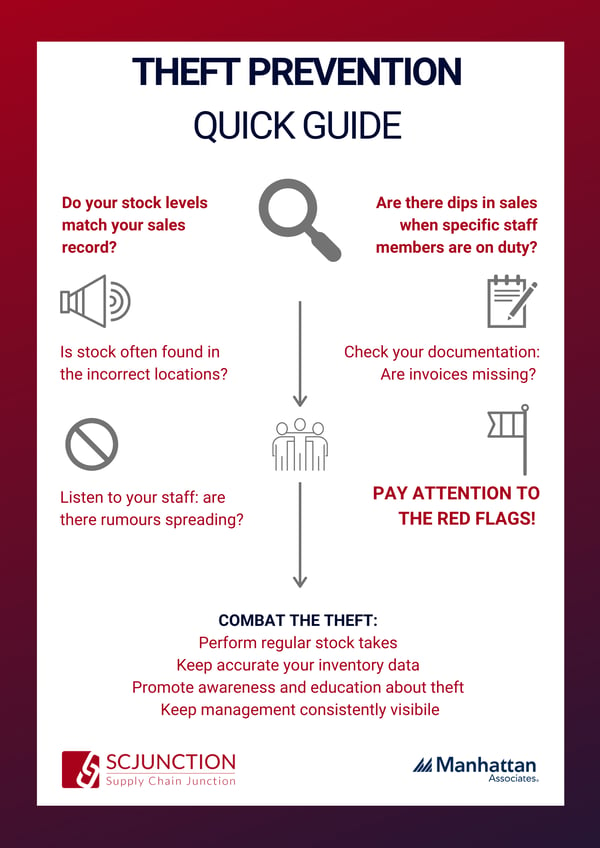
For more tips, tricks and advice on preventing theft in your warehouse, read more here.
4. Cross Docking
One super-smart way to reduce warehouse costs is to employ cross docking, especially in a pandemic climate where supply chains and logistics are all under strain. This is the transfer of product from the supplier directly to the customer, thereby removing the middleman and reducing costs across several points.
Not only does this save time and money on product management, storage, but also on delivery and labour - especially at a time like this, where delivery and labour are two of the most variable and unstable resources. Being able to cut those dead pathways out to expedite shipments to customers fulfils the on-demand desire and trend.
There are differing forms of cross docking, all of which depend on the type of product being shipped:
- flow through
- ship to mark for
- pure cross dock
- merge in transit (which can be coupled with multiple warehouse processes such as put to store, opportunistic substitution and allocation).
Some products better suited to cross docking than others:

Read: 10 Ways to Optimise your Dock to Stock Processes for eCommerce Success
Cross docking solutions also come with associated risks which all businesses should consider before implementing them into standard operating procedures. Due to the fact that products aren’t put away in your company’s preferred manner there may be an increased loss of inventory control.
To counter this and implement cross docking effectively, robust inventory control processes and practices should be implemented - the good news is that this is all possible under a good WMS.
The concept of cross docking can provide solid solutions and benefits to ensuring a successfully optimised supply chain. However it is vital to remember that the main aim of cross docking is to ship out the inventory without having to make any changes to how it was received.
This is often a pressure point for warehouse management as a seamless solution is required, one that matches the inventory received to the open orders. This is where the implementation of a first-class warehouse management system becomes essential.
5. Effective Slotting
Part science, part creativity, slotting optimisation is a must-have: it is the step-by-step process of analysing inventory data for the purpose of categorising and organising inventory throughout a warehouse or distribution center. This ultimately boosts productivity and profitability in your warehouse, and maximises the overall efficiency of your operations.
Look at the Australian toilet paper crisis of 2020 if you need reminding of how essential it is to have things where you need them!
It can be a key differentiator between your service and your competitors, so it's essential you get it right. Having the right product is in the right place at the right time is the ultimate goal, and a massive contributor to improving picking speed and order processing.
The result is a convenient, efficient experience that will delight customers.
Slotting optimisation helps you determine the best locations for your inventory by strategically grouping items based on picking trends, MHE constraints and warehouse layout . This helps improve productivity, worker safety and order accuracy.
Read more here.
The first place you should focus on when attempting to cut costs in your warehouse is locating and creating your ‘golden zone':
- Most accessible location in your warehouse
- Where your fast-moving items should be stored
- Larger, heavier and slower moving inventory should be positioned towards the back.
This can help staff to pick faster, with more accuracy, and lower your overheads - with order picking accounting for up to 50% of your total warehouse operating costs, slotting optimisation will assist with lowering your overall costs.
Additional benefits to slotting optimisation in your warehouse include:
- the elimination of bottle-necking
- superior inventory control
- safety and replenishment ability
- decreased handling costs and lead times
- accurate demand planning.
All of the benefits add to a positive customer experience, which is exactly where superb retailer's focus lies. Don't ever forget that in the business of service delivery, people expect MORE service when it is hardest to give it to them. On the positive, people remember which company gave them what they needed in stressful times, and happy people = return customers = positive profit.
If you would like to read more about effective slotting optimisation, head over to this in-depth feature
6. Optimised Picking Process
You’ve got the golden zone sorted, so what’s next? Previously you could make a small tweak to your picking process and see big changes... and then a global pandemic eliminates boots-on-the-ground.
Now you realise you need to be able to seamlessly adjust your picking process to a new optimal, where it not purely about speed but also accuracy.
As an example, consider your trip to do the monthly grocery shop, and how that has evolved in a pandemic. All the old problems - forgetting items, adding to orders, no stock, substitutions, etc. - now have the added stress of online engagement! You need to avoid returns and dissatisfaction.
Our top tips to help manage expectations and disruptions in Covid chaos include:
- Prioritise urgent and VIP orders first
- Don’t mix your SKUs
- Keep SKUs that are often selected together, close together
- Arrange items in batches or clusters (to enable more than one collection at a time)
- Avoid vertical picking wherever possible
- Keep your fastest stock in the golden zone, horizontally
- Keep slower stock vertically
- Ensure all of your stock is clearly labelled
- Store inventory in the most appropriate storage facility; whether that be a bin or a pallet
- AUTOMATE, AUTOMATE, AUTOMATE!
Again, here we raise the importance of using data to garner important trends and insights into your warehouse, as well as being able to operate someone independently of physical human labour, be it manual picking or on-site interactions.
These will allow you to streamline your processes, increase productivity and decrease costs – all of the ‘great' that you’re looking for to keep stressed customers feeling provided for and tended to.
A solid Warehouse Management System will do all of the heavy lifting for you, with very little effort, ensuring you increase overall efficiency and gain the competitive advantage.
Eager to get moving? Find out more about optimising your picking process here.
7. The Right Technology
In the wake of COVID-19 and many retailers scramble to omnichannel and e-commerce, technology is improving by the day. You need a solution that is scalable and current to ensure you can constantly improve all functions across your supply chain. Modern distribution techniques are used across the globe, all thanks to innovative technology development, with more in the development pipeline.
Warehouse management systems (WMS) help individual businesses to find particular solutions for major challenges that many grapple with today, from transitioning to a cloud-based solution so staff can enforce social distancing and work from home, to improving inventory management and visibility, all ultimately with the goal of supreme customer service.
Read: The Top 5 Smart Warehouse Technologies Your Should be Using Today.
Managing your entire supply chain process, a WMS is an excellent way to provide effective solutions to balance your business challenges. Your WMS has the ability to automate and optimise all processes within your supply chain, leading to up to 99% inventory accuracy.
Alerting you to vital stock concerns or highlighting new trends, implementing the right WMS technology will ensure you constantly have critical information at your fingertips, saving you time and allowing you to make important decisions immediately.
- Have you considered the installation of RFID portals at strategic points throughout your warehouse? This facilitates finding misplaced inventory much faster thus saving on the costs of labour.
- Weigh up the advantages of a voice-directed picking system, which uses speech recognition to communicate with your WMS.
- Further streamlining warehouse processes, put-to-light and pick-to-light systems allow for speedy and paperless picking.
8. Benchmarking, and why you need it
According to the American Productivity and Quality Center (APQC), benchmarking is:
“The process of improving performance by continuously identifying, understanding, and adapting outstanding practices and processes found inside and outside the organisation. Benchmarking (seeks) to improve any given business process by exploiting ‘best practices’ rather than merely measuring the best performance. Best practices are the cause of best performance. Studying best practices provides the greatest opportunity for gaining a strategic, operational, and financial advantage.”
The most common mistake businesses make when it comes to benchmarking is not clearly aligning and defining their goals around global industry best practices. In fact when benchmarking, supply chain thought leaders are looking globally to their peers - aiming to provide world-class solutions, not only the best in their specific country.
Why? Because customers have more and more options available to them and, thanks to technology, they’re not limited by geographical proximity.

Need help benchmarking your warehouse operations? Our supply chain experts will assess your needs and make recommendations to help you achieve industry best practices.
Benchmarking your warehouse helps to set an ideal standard, and mark deviation from it. This gives you a direct insight into what is going wrong, where, making it MUCH easier to rectify and streamline processes to get employees on the right track, keep customers happy, drop overheads and increase profits.
A WMS can offer your business significant benefits across your entire supply chain, ensuring you reach your business objectives. How much does it cost you to implement a WMS, and how can you save in the long run?
Download our comprehensive guide to justifying the ROI on your WMS Investment:
TAGS
- WMS (51)
- Warehouse Best Practice (46)
- Implementing a WMS (29)
- Managing your warehouse (19)
- Omni Channel (18)
- eCommerce (18)
- Blog (16)
- Supply Chain Best Practice (16)
- Customer Journey (9)
- Mid-Level (8)
- Warehouse optimisation (7)
- General Tips (5)
- Industry General (5)
- Information (5)
- Trends (5)
- managing your Supply Chain (5)
- saudi arabia (5)
- Press Release (4)
- smart warehouse (4)
- 3PL (3)
- News (3)
- ERP (2)
- Entry-level (2)
- ROI (2)
- Case Study (1)
- OMS (1)
- Picking (1)
- Solution-Specific (1)
- Transport Management System (1)
Take A Look At The Results Of A Successful WMS Implementation.
See how Tarsus Distribution, in collaboration with SCJ boost overall efficiency by 60%




